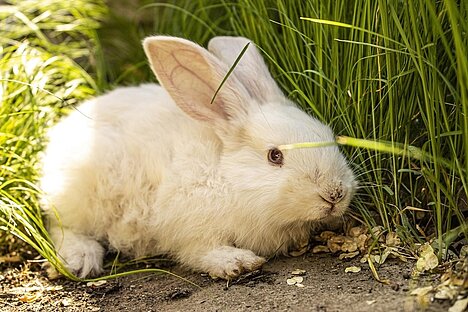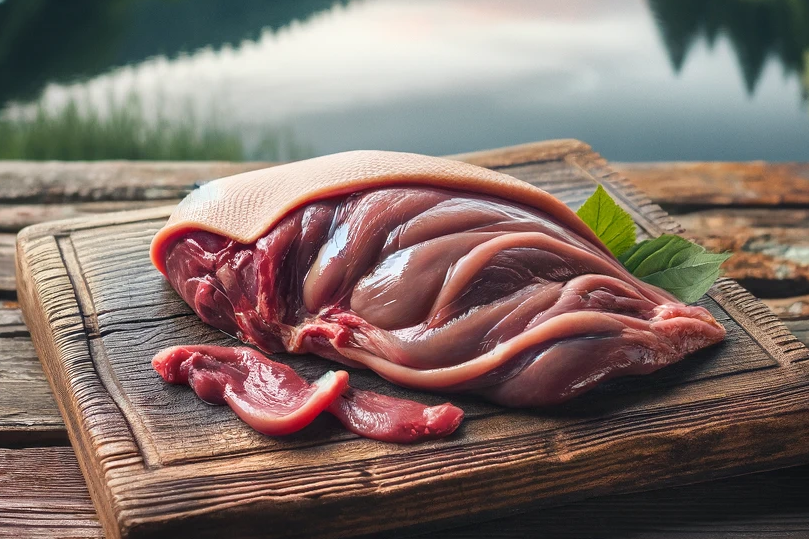Rabbit lung

You may have heard of rabbit lung as a dog food and wonder if it's a good choice. In this article, you'll find out what rabbit lung is, what its advantages and disadvantages are and what you should look out for when giving it to your dog.
What is rabbit lung?
Rabbit lung is a by-product of rabbit slaughter. It is the organ responsible for respiration. Rabbit lung is rich in protein and has a low fat content. It also contains iron, zinc and vitamin B12. Rabbit lung belongs to the so-called offal or rumen, which is often used as BARF food (Biologically Appropriate Raw Food) for dogs.
What are the benefits of rabbit lung for dogs?
Rabbit lung can have several benefits for your dog's health and well-being. Firstly, it can strengthen the muscles and the immune system, as it provides a lot of high-quality protein. Secondly, it can aid digestion as it is easy to digest and contains fiber. It can also clean your dog's teeth if you offer it as a chew. Rabbit lung is also a good alternative for dogs with allergies or intolerances to other types of meat, as it is hypoallergenic.
What are the disadvantages of rabbit lung for dogs?
Rabbit lung also has some disadvantages that you should be aware of before feeding it to your dog. For one, it can be high in cholesterol, which is not suitable for dogs with cardiovascular problems. Secondly, it may contain bacteria or parasites that can lead to infection or disease. Therefore, you should always cook rabbit lung thoroughly or freeze it before giving it to your dog. You should also make sure that the rabbit lung comes from a trustworthy source and does not contain any harmful substances or medication.
How much rabbit lung can my dog eat?
Rabbit lung should not be your dog's main source of food, but should only be used as a supplement or reward. The exact amount depends on your dog's size, age and activity level. As a rule of thumb, offal such as rabbit lung should make up around 10 to 15 percent of the daily food ration. This corresponds to around 20 to 30 grams per kilogram of your dog's body weight per week. You should also make sure that you don't give your dog too many different offal at once, but alternate them.
Rabbit lung can be a healthy and tasty snack for your dog if you keep a few things in mind. It can support your dog's muscles, immune system, digestion and teeth and is also suitable for dogs with allergies. However, you should make sure that you cook or freeze rabbit lung thoroughly, get it from a safe source and feed it in moderation.
If you notice any signs of hypersensitivity or poisoning in your dog, you should see your vet immediately. We are not a substitute for a vet, but we try to be as accurate as possible. Every dog reacts differently and we recommend you get a second opinion or consult your vet if in doubt.
Stay healthy and take good care of your four-legged friend!😊
Similar to Rabbit lung
Chicken lung is a by-product of poultry slaughter. It consists of the tissue that lines the trachea and bronchi of chickens. Chicken lung has a soft and spongy consistency and a mild taste. It is...
Pheasant lung is, as the name suggests, the lung of the pheasant, a game bird that is popular both for its tasty meat and for hunting. In the context of dog nutrition, pheasant lung is a by-product...
Quail lung, the respiratory organ of the quail, is a light, porous tissue that is rich in protein and low in fat. In animal nutrition, it is often dried or processed into a fine powder for use as a...
Duck lung is a by-product of poultry processing and refers to the lung tissue of the duck. It is valued in animal nutrition for its high protein content and soft texture. Duck lung can be used raw,...



